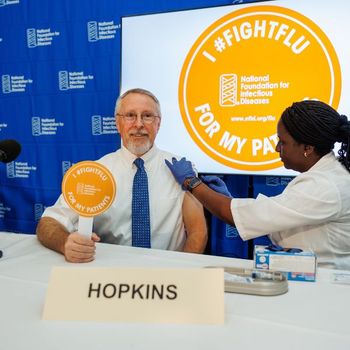
USDA and FDA Announce Investigation Results of Texas Cow That Tested Positive for Bovine Spongiform Encephalopathy
The U.S. Department of Agriculture (USDA)'s Animal and Plant Health Inspection Service (APHIS) and the U.S. Department of Health and Human Services' Food and Drug Administration (FDA) have completed their investigations regarding a cow that tested positive for bovine spongiform encephalopathy (BSE) in June 2005. The agencies conducted these investigations in collaboration with the Texas Animal Health Commission and the Texas Feed and Fertilizer Control Service.
According to the federal agencies, Our results indicate that the positive animal, called the index animal, was born and raised on a ranch (termed the "index farm") in Texas. It was a cream-colored Brahma cross approximately 12 years old at the time of its death. It was born prior to the implementation of the 1997 feed ban instituted by FDA to help minimize the risk that a cow might consume feed contaminated with the agent thought to cause BSE. The animal was sold through a livestock sale in November of 2004 and transported to a packing plant. The animal was dead upon arrival at the packing plant and was then shipped to a pet food plant where it was sampled for BSE. The plant did not use the animal in its product, and the carcass was destroyed in November 2004.
APHIS attempted to trace all adult animals that left the index farm after 1990, as well as all progeny born within two years of the index animal's death. Together, these animals are called animals of interest.
During the course of the investigation, USDA removed and tested a total of 67 animals of interest from the farm where the index animal's herd originated. All of these animals tested negative for BSE. 200 adult animals of interest were determined to have left the index farm. Of these 200, APHIS officials determined that 143 had gone to slaughter, two were found alive (one was determined not to be of interest because of its age and the other tested negative), 34 are presumed dead, one is known dead and 20 have been classified as untraceable. In addition to the adult animals, APHIS was looking for two calves born to the index animal. Due to record keeping and identification issues, APHIS had to trace 213 calves. Of these 213 calves, 208 entered feeding and slaughter channels, four are presumed to have entered feeding and slaughter channels and one calf was untraceable.
To determine whether contaminated feed could have played a role in the index animal's infection, FDA and the Texas Feed and Fertilizer Control Service conducted a feed investigation with two main objectives: 1) to identify all protein sources in the animals feed history that could potentially have been the source of the BSE agent, and 2) to verify that cattle leaving the herd after 1997 were identified by USDA as animals of interest and were rendered in compliance with the 1997 BSE/ruminant feed rule.
The feed history investigation identified 21 feeds or feed supplements that were used on the farm since 1990. These feed ingredients were purchased from three retail feed stores and were manufactured at nine feed mills. This investigation found that no feed or feed supplements used on the farm since 1997 were formulated to contain prohibited mammalian protein. Due to this finding, FDA has concluded that the animal was most likely infected prior to the 1997 BSE/ruminant feed rule.
The investigation into the disposition of herd mates from this farm involved visits to nine slaughter plants and eight rendering plants. The investigation found that all of the rendering plants were operating in compliance with the BSE/ruminant feed rule. A review of the inspection history of each of these rendering firms found no violations of the FDA feed ban rule.
APHIS and FDA report that they are very pleased with the results of their investigations, which show the animals of interest did not present a threat to livestock and that the ruminant feed rule is being followed. The U.S. maintains an interlocking system of safeguards designed to prevent BSE from entering the human and animal food chain. USDA also remains vigilant in its attempt to find BSE in the United States. To date, there have been more than 450,000 animals tested in the last 14 months and only two BSE positive animals found in this country.
For more information on USDA's epidemiological investigation and a copy of the report, visit the APHIS Web site at http://www.aphis.usda.gov/lpa/issues/bse/bse.html or http://www.aphis.usda.gov/lpa/issues/bse/epi-updates/bse_final_epidemiology_report.pdf
Source: FDA
Newsletter
Stay prepared and protected with Infection Control Today's newsletter, delivering essential updates, best practices, and expert insights for infection preventionists.






